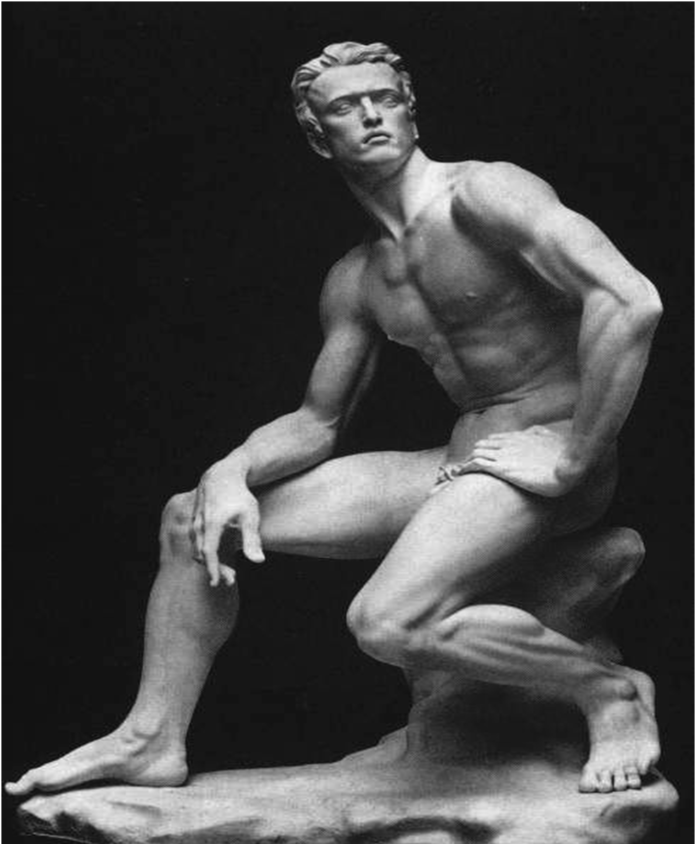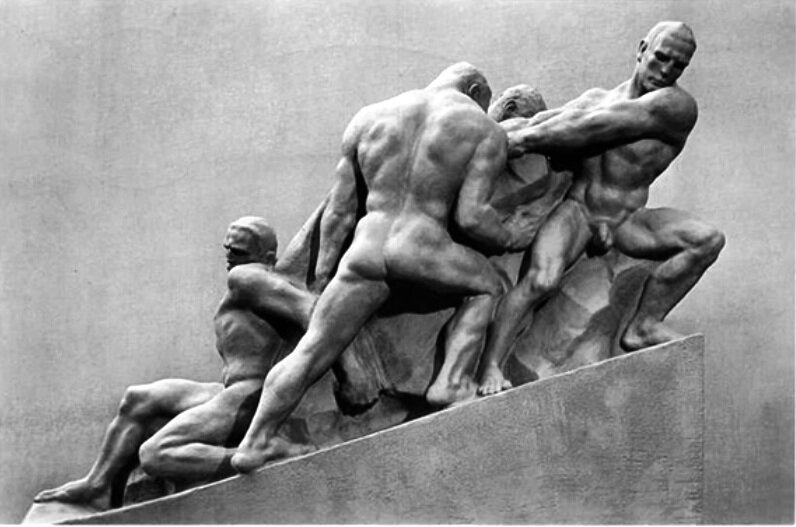The question of art was considered important by Hitler during the decade of his reign (1933-1945), and is reflected in the references to art in his speeches: The National Socialist Party first addressed the issue of art through the publication of several magazines, such as Die Kunst dem Volke (The Art of the People) and Die Kunst im Deutschen Reich (The Art in German Empire), edited by A. Rosenberg. He also created organizations such as the Reichskunstkammer, founded in 1935, which promoted and financially supported certain types of art and even convinced artists of other movements to follow the artistic preferences of the state.
Hitler, between the architect Albert Speer and the sculptor Arno Brecker
The sculpture took the place of painting, because Hitler was frustrated by the German painting production, but also because the sculpture could better express the ideas of National Socialism.
Through the sculpture they tried to express the values and morals of the Germans by depicting heroes, athletes and warriors. Other themes that pleased the National Socialist state were also expressed, such as motherhood.
“Anmut”, Arno Breker, 1939
But no subject was glorified as much as the male body. The sculptors were inspired by ancient Greek models. Men appear tall, strong, with upright shoulders and tight lips. In this way, their art expressed their perception of the new man, who feels neither shame nor fear, but is a superior man who does not belong to any social class, since he is depicted naked without any material qualities.
“Die Berufung”, Arno Breker 1940-1941
Farnese Hercules
Artist: Glykon, reproduced from the original by Lysippos
Year: 216 AD (4th century BC for original)
Everything about the sculptures is idealized, like hair, lips and muscles. The appearance of the sculptures is imposing and epic and does not represent the style of an everyday person.
The Nazi regime turned art to the ancient Greco-Roman model to dominate the "degenerate" modern art and to better express militarism.
Der kamerad - Josef Thorak
The most famous sculptures are those of Thorak and Breker and have themes that tend towards ancient eras. In 1936 Hitler took the opportunity at the Olympic Games in Berlin and tried to prove the spiritual and hematological relationship of the German Aryans with the Greco-Roman culture.














